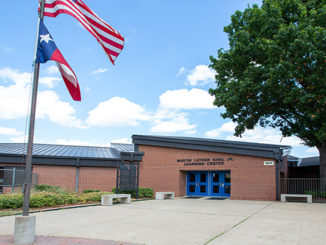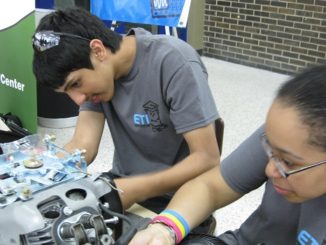
by Jimmie Don Aycock
Across the nation, there is a simmering discussion about education funding. In places — Oklahoma, Arizona, Kentucky, West Virginia — that simmer has reached the boiling point. Here in Texas, we have tasked a commission to study education funding — again.
Amid years of ongoing study, what have we learned? We have learned there are no easy answers and certainly no magic bullets to fix education funding. However, amid the vast array of data there is some clarity. First, poverty makes educating students more difficult and more expensive. Second, lack of English language skills makes educating students more difficult and more expensive. Unfortunately, about 60 percent of Texas students fall into the poverty category. Almost one in five Texas students speaks limited English.
We have also learned some things that work even in the most challenging circumstances. We know that if we attract, train and retain quality teachers there is a positive effect. We know that giving our best teachers incentives to teach on the most difficult campuses has a positive effect. We know that early childhood education — full day, high quality, Pre-K through 3rd grade — helps narrow the gaps for struggling students. Finally, it will require “wrap around services” including health care, nutrition and social services to make an impact on our harshest educational environments.
Now the reality check: All of these things cost money. They also face the political perils of pulling sparse assets from mainstream students to more challenged students. If we truly believe that students in special education, limited English programs and in poverty really deserve to catch up, then funding must be part of the conversation.
None of this happens in a vacuum. Other urgent needs from child protective services, foster child care, retired teacher health care, drug crisis interventions and on and on, all pull from state resources. To make matters even more complex, this is occurring during a fundamental shift in state policy. For some years, the state has been systematically cutting taxes and shifting the cost of services toward local taxpayers and local fees. Education is a prime example of this, the state share of education funding falling from 50 percent to 38 percent since 2008. If we really dislike property taxes, then we must have a discussion about what revenue stream we would prefer.
As part of this new reality, our state faces several options. One is to simply live with a mediocre education system. After all, our students perform near the national average while our funding is far below the national average. Another option is to simply accept that we will have very high local school property taxes as the state pays less and less of the overall cost of public education. Or, hopefully, we can realistically face the need to enhance state revenue. That discussion is never politically easy.
As our Commission on Public Education Finance struggles through the summer we wish them well. Most of us believe that accepting mediocrity is not very Texan. But the reality is that, without a discussion about increasing state revenue, their work can only join the myriad of other dust-covered school finance studies that have preceded them.
Jimmie Don Aycock is a Republican former member of the Texas House of Representatives and served as the chairman of the Texas House Committee on Public Education.



